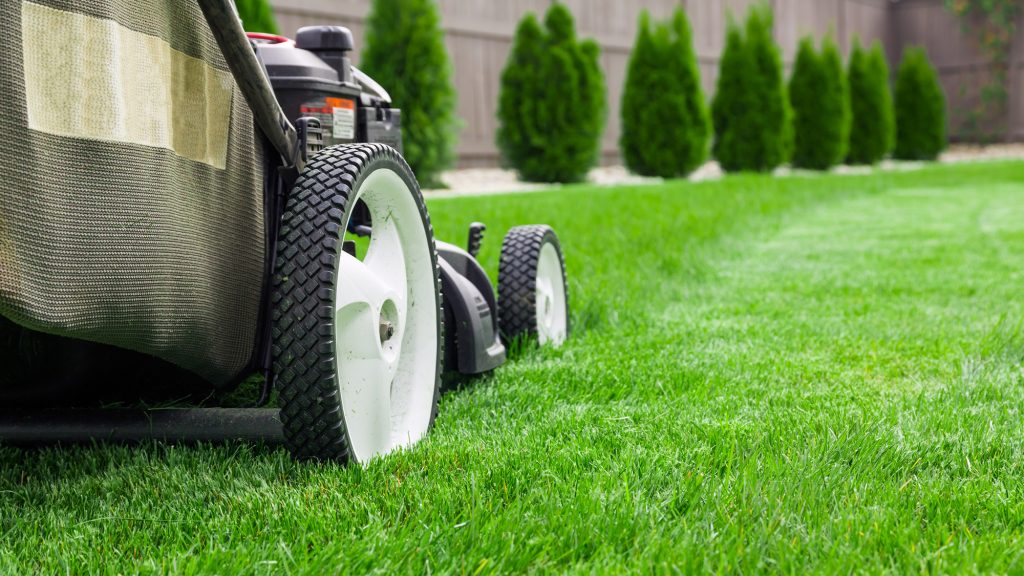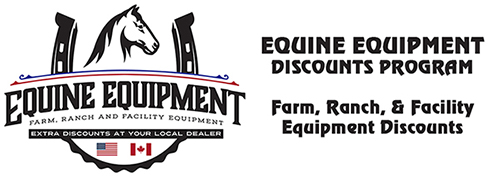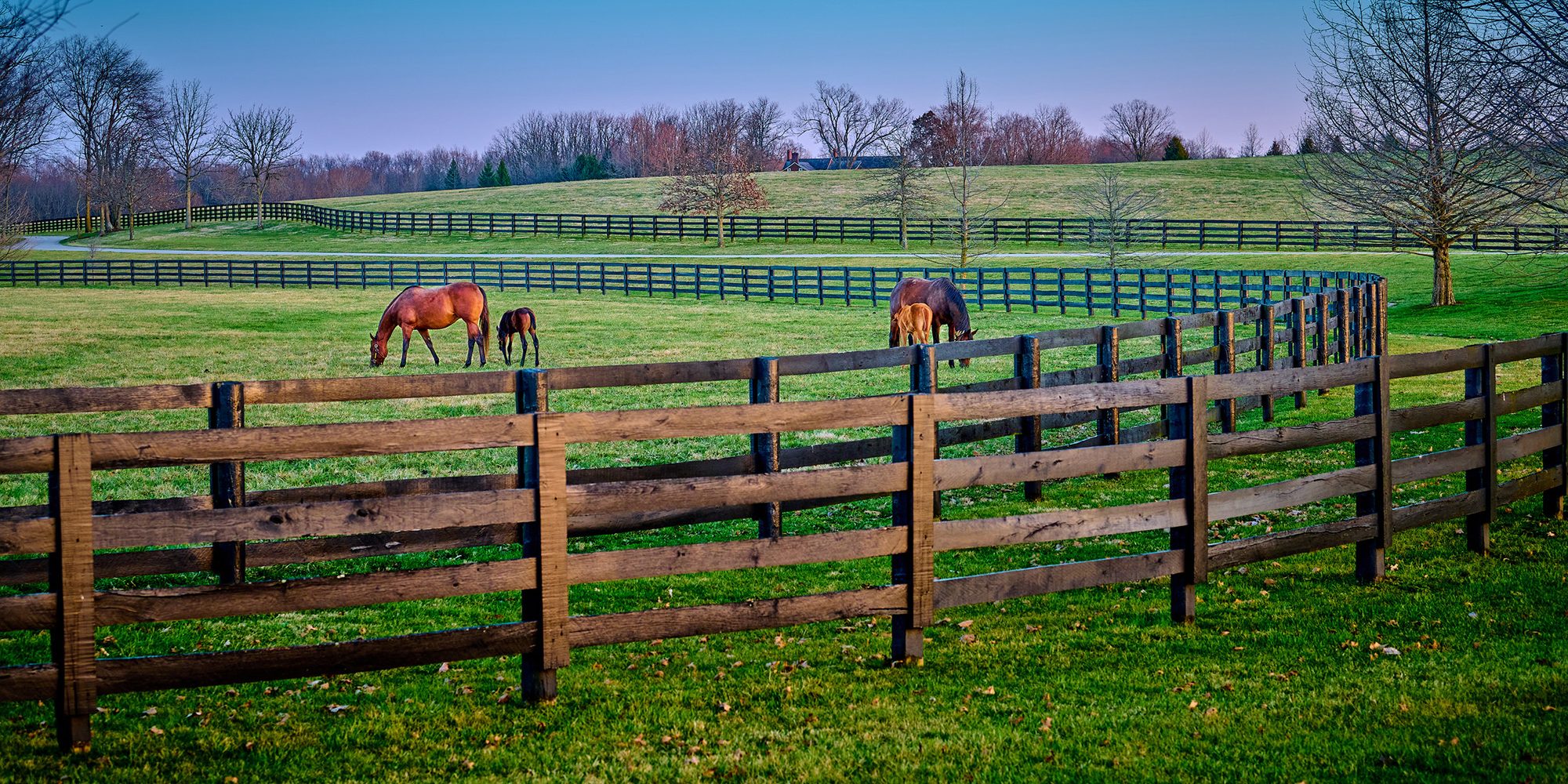As spring settles in, it’s time to focus on keeping your horses and equipment in top shape. In this month’s Equine Equipment newsletter, we’ll cover key concerns like rain rot, hoof health, and seasonal allergies that can affect your horses. Plus, we’ll share essential tips on tractor maintenance and farm security to ensure your equipment and property are ready for the busy months ahead. Stay informed and prepared with our expert advice for a smooth and healthy spring!
Things to Watch for This Spring
- WATCH FOR RAIN ROT: As the weather warms, some horses become prone to the skin condition known as rain rot. The bacteria that causes it normally resides on the skin without problem but multiplies on damp, dirty, and sweaty coats. Rainrot causes tight, painful scabs to form along a horse’s topline and in runoff patterns along the flanks and hindquarters. Do not pick the scabs, and be careful if you clip the coat—both can be very painful to the horse. Instead, give your horse a few baths with a medicated, antimicrobial shampoo. As his winter coat sheds and the new coat emerges, the rain rot will likely clear up quickly. Elderly horses or those with compromised immune systems may have more trouble fighting off the infection, check with your vet when appropriate. Rainrot causes tight, painful scabs to form along a horse’s topline and in runoff patterns along the flanks and hindquarters. Do not pick the scabs, and be careful if you clip the coat—both can be very painful to the horse. Instead, give your horse a few baths with a medicated, antimicrobial shampoo. As his winter coat sheds and the new coat emerges, the rain rot will likely clear up quickly. Elderly horses or those with compromised immune systems may have more trouble fighting off the infection, check with your vet when appropriate.
- PARASITE CONTROL AND DEWORMING: Spring is an opportune time for reviewing your horse’s parasite control program. Conduct fecal egg counts and work with your veterinarian to develop a targeted deworming plan based on your horse’s needs and pasture management practices.
- ALLERGIES AND RESPIRATORY HEALTH: Spring blooms can trigger allergies in horses, leading to respiratory issues. Keep an eye out for signs of nasal discharge, coughing, or labored breathing. If necessary, consult with your veterinarian for allergy management strategies and consider adjusting turnout areas if environmental allergens are identified.
- HOOF HEALTH: Spring’s softer ground can contribute to changes in hoof conditions. Regularly check hooves for signs of thrush, cracks, or imbalances. Adjust your horse’s trimming schedule as needed and consider applying hoof protection if transitioning from soft to rocky terrain.
- SPRING TURNOUT: Gradually reintroduce horses to increase turnout as pastures green up. Monitor for signs of laminitis, often associated with rapid consumption of rich spring grass. Utilize grazing muzzles if necessary and consider implementing controlled turnout times.
- WATER: The most important nutrient in your horse’s diet may be the most overlooked. What do you really know about how much your horse should be drinking per day? The amount of water a horse needs to consume per day is directly related to how much water the horse loses per day. Horses lose water mainly through their manure, urine, sweat, respiration and for a broodmare, through lactation. All of these variables must be taken into account when determining how much water horses should be drinking.
- MUD FEVER: Characterized by acute inflammatory reactions, mud fever and other damaging parasites may lay dormant in your horse until the skin is damaged. Mud fever may cause scabbing, fissures in the skin, thick white discharge, or heat, swelling, and pain. If your horse’s hooves appear to be at all scabbed, bruised, or display any signs of infections, it is likely a form of mud fever. Prevention is as simple as keeping your horse’s hooves dry and washing away mud and dirt.
Springtime Tractor Check Up

Another winter has passed. It’s time for you and your tractor to get back to work. There’s no shortage of stumps to pull, earth to till, and so much else. A little preparation goes a long way toward making sure that your tractor is ready to go when you are. Our checklist includes inspecting the mechanics, engine, fluids, and battery…
- THE DIY MECHANIC: If you kept your tractor in storage and properly winterized, any problems that you find should be minimal. Make sure you grease all of the tractor’s bearings, double-check for loose wires and fasteners.
- TIRES: Air pressure gets lost during the offseason, make sure yours are properly inflated. If you spot any signs of dry rot or cracks, it’s time to replace them completely.
- THE ENGINE: The engine belts should only deflect about a quarter of an inch if they’re holding proper tension. Always make sure to replace any belts that look worn or torn or that fail to hold proper tension.
- THE FLUIDS: As you know, your tractor has a lot of different fluids. It’s key to check them when removing your tractor from storage. Low engine oil, coolant, or hydraulic fluid can quickly derail your first day of the season.
- THE BATTERY: During the offseason, batteries are a point of weakness. Before you need to start the tractor, take out the battery and charge it up fully. Clean all the terminals while you’re at it. Batteries are always in high demand at the start of the season, so it’s good to replace yours early if necessary.
- LASTLY: When you do get your tractor running, make sure to give it at least 30 minutes of idling. A quick and gentle drive can help ensure it’s fully charged and operating properly. This is essential with diesel engines; especially as cold motors are prone to sputtering and failure. It’s just easier on all the moving parts within the engine before you get to the real work.
Security Considerations
- If the horses are in a barn at night, is there a motion light installed, or a dusk-to-dawn light that would illuminate movement? Is it close to the house?
- Install a trail (remote) camera near the barn doors to photograph anyone trying to get in. Consider a trail camera near the paddock gate or a fence-line.
- Put up notices that all horses, tack and equipment are marked and can be identified.
- Consider installing a closed-circuit TV system that can be monitored from the house.
- Place your horse trailer away from the barn and lock the wheels. Some thieves are bold enough to hook your trailer to their vehicle and drive away with your horse.
- Keep your neighbors informed of suspicious activity in your area so everyone can keep an eye open for strangers lurking around.
- Noisy pets, such as geese, dogs and peacocks, are highly effective as their noise can be enough to deter a thief and give you some seconds of reaction time for stopping a theft
Spring Mower Maintenance Tips
- CHANGE THE OIL: Start the season with fresh oil and filters. Since oil is the lifeblood of your engine, changing it routinely is much less expensive than paying for an engine overhaul.
- SHARPEN / REPLACE THE BLADES: Your mower will cut faster and deliver a better quality cut with sharp blades. Few parts enhance cut quality and productivity as dramatically as sharp, balanced blades. Get an extra set of blades to replace those that have lost their edge. This way, you’ll always have sharp, balanced blades ready to go, and no downtime required for sharpening. This is one of the most crucial spring mower maintenance steps.
- THOROUGH CLEANING: Starting with a clean mower will make it easier to perform other spring maintenance items. Use a strong spray of water. A putty knife can also help remove any grass caked on the underside of the mower deck. Once it’s clean, you can wax the deck to keep grass and dirt from sticking to it.
- TIRES: Check the pressure on all mower tires and fill them to the recommended pressure indicated on the tire sidewall. Mowing with too low of tire pressure is, first and foremost, a safety issue—it also compromises mower efficiency, performance and handling.
- INSPECT ENGINE BELTS: Inspect all belts and replace any that appear visibly worn. Also, check all belt tensioners to ensure proper function.
- FRESH FUEL: If you left fuel in the tank over the winter, it should be drained and replaced with fresh fuel. Because gasoline degrades in quality over time, old fuel can cause inconsistent starting and running performance. Never use fuel that contains more than 10-percent ethanol, as higher percentage blends may lead to engine damage and/or performance issues.
- REPLACE SPARK PLUGS: Replace your mower’s spark plug(s) at the start of the season to ensure easy starting and consistent running performance.
- CHECK DECK AND PUMP IDLER PIVOTS: Checking all mechanical features of your mower is always a great idea to ensure efficiency, and that extends to checking your deck and pump idler pivots. Checking these parts routinely is essential to making sure your mower’s hydraulics are in tip-top shape.
- GREASE CASTER FORK BEARINGS AND FRONT CASTER PIVOTS: Checking in on the lubrication quality of your caster fork bearings and front caster pivots helps your mower maneuver more smoothly. All you need to do is remove the plug, grease zerk, and dust cap, grease the cavity until full, then replace the cap and plug until next year.
Completing spring mower maintenance will ensure you are ready for cutting season. You’ll be grateful you did!








